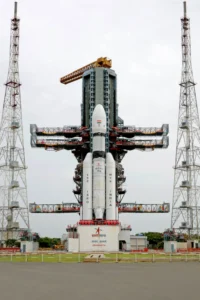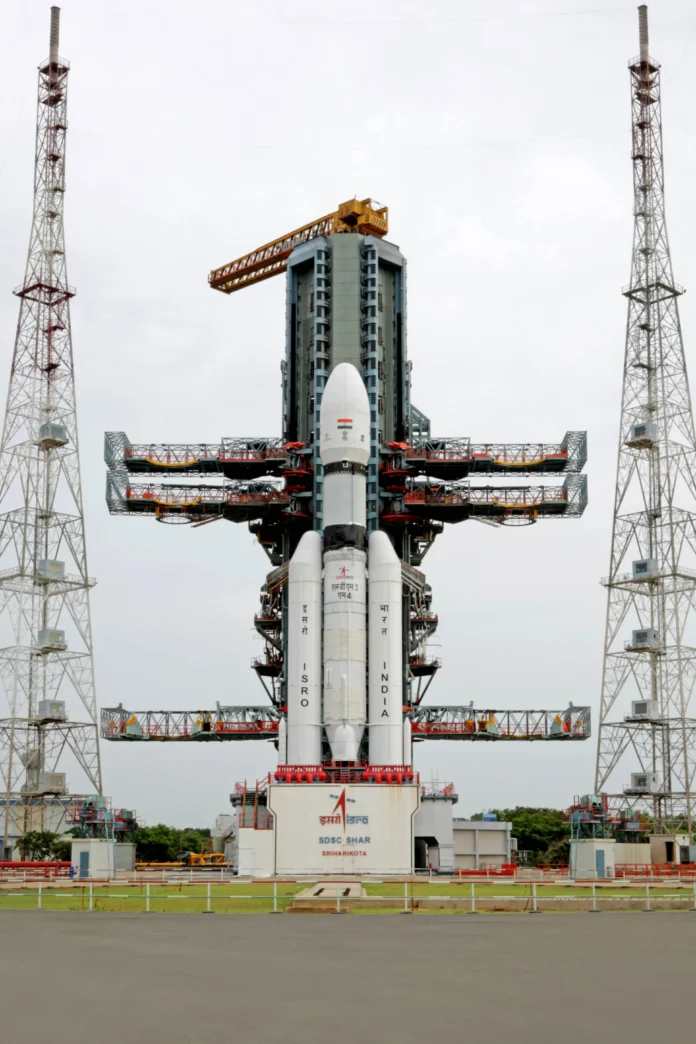Chandrayaan: India’s Spectacular Journey to the Moon
 Space exploration has been a constant fascination for humankind since the dawn of time. The allure of the vast cosmos and the mysteries that lie beyond our planet have driven nations and space agencies to embark on ambitious missions to explore distant celestial bodies. Among the countries that have made significant strides in space exploration is India, which took a giant leap with its Chandrayaan missions.
Space exploration has been a constant fascination for humankind since the dawn of time. The allure of the vast cosmos and the mysteries that lie beyond our planet have driven nations and space agencies to embark on ambitious missions to explore distant celestial bodies. Among the countries that have made significant strides in space exploration is India, which took a giant leap with its Chandrayaan missions.
The Chandrayaan Program: A Brief Overview
Chandrayaan, which translates to “Moon Craft” in Sanskrit, is India’s lunar exploration program initiated by the Indian Space Research Organisation (ISRO). The program aimed to explore the Moon, conduct scientific research, and demonstrate technological capabilities. It not only showcased India’s space prowess but also demonstrated its commitment to peaceful space exploration and knowledge dissemination.
The Chandrayaan program consisted of two main missions: Chandrayaan-1 and Chandrayaan-2. Each mission had unique objectives, and together they provided valuable insights into the Moon’s geological and mineralogical characteristics.
Chandrayaan-1: Pioneering India’s Lunar Journey
Chandrayaan-1, launched on October 22, 2008, was a historic milestone for India, marking its first mission to the Moon. The spacecraft was equipped with a suite of sophisticated scientific instruments, including:
1. Moon Mineralogy Mapper (M3): Provided crucial data about the presence of water molecules on the lunar surface, helping confirm the existence of water-ice in the polar regions.
2. Chandrayaan-1 Imaging X-ray Spectrometer (C1XS): Helped identify key chemical elements on the Moon’s surface.
3. Lunar Laser Ranging Instrument (LLRI): Measured the distance between the spacecraft and the lunar surface, aiding in precise mapping.
During its mission, Chandrayaan-1 made a significant discovery when M3 confirmed the presence of water molecules on the Moon’s surface. This discovery was of immense importance to the scientific community, as it opened up new possibilities for future lunar missions and potential utilization of lunar resources.
However, Chandrayaan-1’s mission was not without challenges. In August 2009, the spacecraft lost communication with ground control, and the mission was subsequently declared over. Despite this, Chandrayaan-1 remained in lunar orbit and continues to be a silent witness to India’s pioneering efforts in space exploration.
Chandrayaan-2: Aiming for the South Pole
Following the success of Chandrayaan-1, India set its sights on another ambitious lunar mission – Chandrayaan-2. Launched on July 22, 2019, Chandrayaan-2 was a multi-faceted mission that consisted of three components: the orbiter, the lander (Vikram), and the rover (Pragyan).
The Orbiter: Chandrayaan-2’s orbiter played a vital role as it continued the work of its predecessor by conducting remote-sensing observations and studying the Moon’s surface from a higher vantage point. It was equipped with several scientific instruments, including cameras and spectrometers.
The Lander (Vikram): Vikram was designed to make a soft landing on the lunar surface near the south pole, a region that had not been explored extensively before. Its primary objective was to study the lunar soil and perform seismological experiments.
The Rover (Pragyan): Pragyan, meaning “wisdom” in Sanskrit, was the rover carried onboard Vikram. It was designed to explore the Moon’s surface and carry out experiments to analyze the composition of the soil.
The Unforeseen Challenge: Chandrayaan-2 captured the world’s attention as it approached the Moon, but during the final stages of the landing, communication with Vikram was lost. Despite the setback, ISRO demonstrated remarkable resilience and transparency by sharing information about the lander’s condition, earning widespread appreciation from the global space community.
The Continuing Journey
Even though Vikram’s landing did not go as planned, Chandrayaan-2’s orbiter remains active and continues to provide valuable data. It has already contributed to our understanding of the Moon’s surface, thermal behavior, and the presence of water molecules in the polar regions.
ISRO’s Chandrayaan missions have been instrumental in advancing lunar science, and the data obtained has added to the global repository of knowledge about the Moon. The experience gained from these missions has also laid a solid foundation for future lunar and interplanetary explorations.
Future Prospects
As the space race intensifies, ISRO has not slowed down its lunar aspirations. Plans for Chandrayaan-3, a follow-up mission to attempt another soft landing, are already in the pipeline. This time, ISRO aims to rectify the issues faced during Chandrayaan-2’s landing and accomplish a successful touchdown.
Moreover, India’s space ambitions extend beyond the Moon. ISRO is actively developing its human spaceflight program, called Gaganyaan, with plans to send Indian astronauts to space in the near future. This remarkable feat will further solidify India’s position as a formidable player in the global space arena.
Conclusion
India’s Chandrayaan missions have been nothing short of groundbreaking, propelling the nation into the league of leading space-faring countries. From the successful launch of Chandrayaan-1 to the brave attempt of Chandrayaan-2, India has showcased its scientific and technological prowess on the world stage.
While space exploration is inherently challenging, the indomitable spirit and determination displayed by ISRO have not only inspired the nation but also garnered admiration globally. As India’s space program continues to evolve and mature, the future holds the promise of even more remarkable discoveries and achievements, making Chandrayaan an inspiring chapter in India’s journey into the cosmos.

